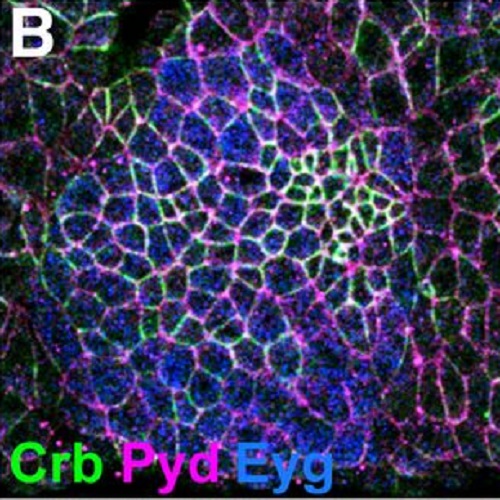Fosmid-based structure-function analysis reveals functionally distinct domains in the cytoplasmic domain of Drosophila crumbs.
The evolutionarily conserved transmembrane protein Crumbs is required for epithelial polarity and morphogenesis in the embryo, control of tissue size in imaginal discs and morphogenesis of photoreceptor cells, and prevents light-dependent retinal degeneration. The small cytoplasmic domain contains two highly conserved regions, a FERM (i.e., protein 4.1/ezrin/radixin/moesin)-binding and a PDZ (i.e., postsynaptic density/discs large/ZO-1)-binding domain. Using a fosmid-based transgenomic approach, we analyzed the role of the two domains during invagination of the tracheae and the salivary glands in the Drosophila embryo. We provide data to show that the PDZ-binding domain is essential for the maintenance of cell polarity in both tissues. In contrast, in embryos expressing a Crumbs protein with an exchange of a conserved Tyrosine residue in the FERM-binding domain to an Alanine, both tissues are internalized, despite some initial defects in apical constriction, phospho-Moesin recruitment, and coordinated invagination movements. However, at later stages these embryos fail to undergo dorsal closure, germ band retraction, and head involution. In addition, frequent defects in tracheal fusion were observed. These results suggest stage and/or tissue specific binding partners. We discuss the power of this fosmid-based system for detailed structure-function analyses in comparison to the UAS/Gal4 system.

- G3 (Bethesda) 2013 Feb 01;3(2):153-65
- 2013
- Cell Biology
- 23390593
- PubMed
Enabled by:
